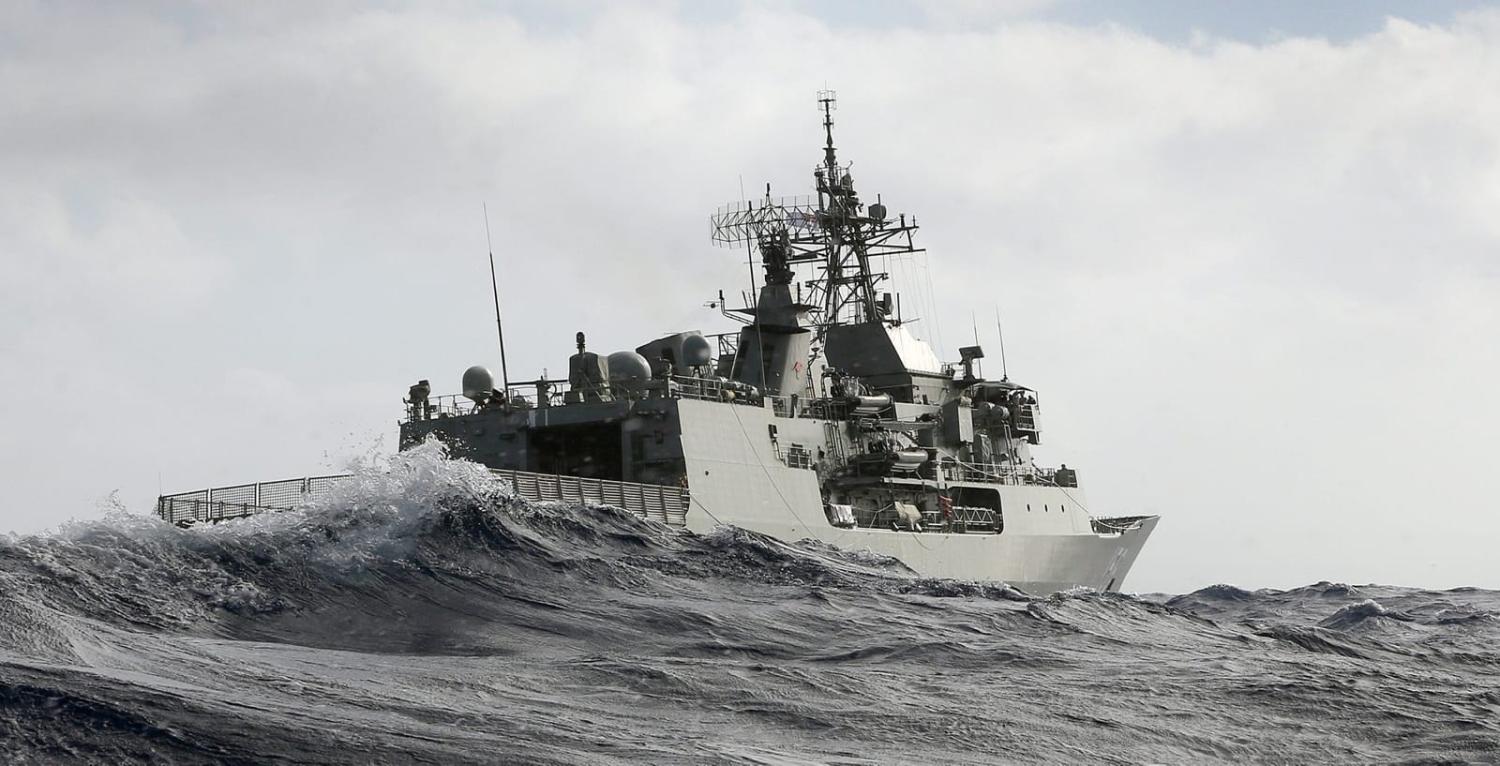Soviet warships regularly sparred with Western navies during the Cold War years, conducting close-in ship-to-ship manoeuvres and pointing lasers against their foreign opponents at sea. China’s People’s Liberation Army Navy have gone one “better” – resorting to what Markus Garlauskas and Philip Yu, writing for the New Atlanticist, called “acoustic aggression” after last month directing active sonar pulses at navy divers working underwater from Australia’s ship HMAS Toowoomba.
The PLA Navy ship in question, CNS Ningbo, is a Soviet-era design guided missile destroyer equipped with a hull-mounted medium/high-frequency sonar system specifically designed to detect and track submarines. The use of active sonar under normal operating conditions is considered rare. While underway, the sonar is kept on passive mode, that is, to listen for underwater contacts. During tactical situations, such as seeking to localise an underwater contact, or to derive a firing solution prior to weapons launch, the sonar would be switched to active mode, meaning, to transmit sound waves. Such high-powered equipment, according to one study, could pulse high intensity pressure waves dangerous to a diver, thus making it prudent to suspend diving operations if the system is being operated in the area.
At the time of the incident, the Australian Department of Defence has said Toowoomba was conducting United Nations sanctions enforcement operations in Japan’s exclusive economic zone (EEZ). Australian divers were trying to disentangle fishing nets that fouled the ship propellers. Ningbo approached Toowoomba at close range and activated its sonar despite acknowledging the latter’s communications regarding diving operations in process.
Contrary to the call from Liu Jianchao, head of the Chinese Communist Party’s International Department, for the Royal Australian Navy to act “prudently”, the fact is that the PLA Navy did not do so. The incident caused minor injuries to the Australian divers. As US Assistant Secretary of Defence for Indo-Pacific Security Affairs Ely Ratner subsequently noted, this act follows “a pattern of coercive and risky PLA operational behaviour”. This has included numerous documented close air manoeuvres against its foreign rivals, especially American military aircraft operating in international airspace over the East and South China seas.
Under the 1982 United Nations Convention on the Law of the Sea (UNCLOS), Article 58 declares that all States enjoy internationally lawful uses of the sea – with specific reference to such uses prescribed under Articles 88 through 115 which relate to freedoms of the high seas. Article 56 also notes that the coastal state “shall have due regard to the rights and duties of other States.” Given its location, the Toowoomba’s conduct of diving operations to disentangle its propellers would have qualified as “internationally lawful uses of the sea” under typical circumstances. In fact, fishing nets commonly foul ship propellers, given this type of marine debris is commonly strewn throughout the world’s oceans.
Existing international law, such as UNCLOS, governs the behaviour of military aircraft and ships operating on the high seas (and in international airspace). This constitutes a legal framework to determine that the Chinese vessel failed to pay due regard to another maritime user, in this case the Australian ship. Whether the incident happened in clearly-demarcated waters or otherwise (as argued by the Chinese authorities) is moot, since this does not absolve any high seas user of the need to pay due regard to each other.
Foreign military activity inside EEZs continues to be a key point of contention in the Indo-Pacific region. Divergent interpretations of the relevant UNCLOS provisions has been the crux of past and present disputes over close air and sea encounters between rival forces. But these persistent differences have not stopped navies from adopting common guidelines to govern their interactions. Notably was the adoption of the Code for Unplanned Encounters at Sea (CUES) at the Western Pacific Naval Symposium in 2014, with Australia and China among the signatories.
Existing international mechanisms do not prescribe explicit guidelines that govern the use of sonars against divers. The 1972 International Regulations for Preventing Collisions at Sea prescribed “equipment for sound signals” (under Rule 33) to include a whistle, bell and gong but made no explicit mention of sonar. CUES listed “actions the prudent commander might generally avoid” during encounters at sea, for instance the use of lasers that could cause harm to personnel or damage to equipment. There was also mention of “simulation of attacks by aiming guns, missiles, fire control radars, torpedo tubes or other weapons in the direction of vessels or aircraft encountered,” but it was silent about sonar – even if the use of such a system could be broadly interpreted as “other weapons”.
This latest incident means there is now an opening for navies to engage in a candid discussion about how best to prevent a recurrence of the Ningbo-Toowoomba episode. It would be prudent for concerned navies participating in the next iteration of the Western Pacific Naval Symposium to flag this sonar incident, with an eye on possibly revising the existing version of CUES. This could also be raised at the ASEAN Defence Ministers Meeting (ADMM) to kickstart a discussion about acoustic and underwater safety practices for navies in the form of a concept paper, which could possibly result in a future intra-ASEAN agreement. A good example as a guide would be the Guidelines for Air Military Encounters adopted by ASEAN defence chiefs in 2018, which ADMM dialogue partners Australia and China, among others, also endorsed “in principle”.
But it is not presumptuous to say that Beijing’s “acoustic aggression” could set a dangerous precedent which, if not properly addressed by the international community, may become a normalised form of behaviour.

